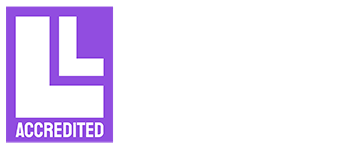-
Business Services ▾
-
Company & Commercial
- Legal Services for Landlords
- Commercial Property
-
Employment Law
- - Sponsor Licences
- - Employment law solicitors and HR training UK
- - Employment Tribunals Advice
- - HR Consultancy
- - Discrimination and Family Issues in the Workplace
- - Restrictive Covenants
- - Drafting and Varying Contracts of Employment
- - Redundancies and Restructuring
- - Disciplinary Hearings, Dismissals and Grievances
- - Trade Unions and Industrial Action
- - TUPE Guidance
- Commercial Litigation
-
Legal Compliance
- Debt Recovery
- Business Recovery & Insolvency
-
Company & Commercial
-
Individual Services ▾
- Residential Property
- Public Law
- Family & Matrimonial
- Children Law
-
Clinical Negligence
- - Abuse and neglect of the elderly
- - Fracture Negligence
- - Surgical Negligence
- - GP Negligence
- - Gynaecological Claims
- - Medication and Prescription Error Advice
- - Paediatric Claims
- - Orthopaedic Negligence
- - Physiotherapy or chiropractic treatment errors
- - Ophthalmic Eye Claims
- - Cancer Misdiagnosis Claim
- - Pressure Sores
- - Inquest Representation
- - Cauda Equina Syndrome Compensation
- - Anaesthetic Awareness – Administration Mistakes
- - Birth Injuries
- - Cosmetic Surgery Mistakes
- - Negligent Cardiac Care Claims
- - Cerebral Palsy
- - Chiropractic Injury
- - Colorectal Surgery
- - Consent to Treatment
- - Dental Negligence
- - Ear, Nose and Throat
- - Sepsis
- - Personal Injury
- Wills & Probate
- Dispute Resolution
-
Sports Law
- Employment Law
-
UK COVID-19 Inquiry
- LGBTQ+ Legal Advice
29th June 2022 | Employment
“Bald” insults are classed as sex-related harassment by employment tribunal
Following a recent employment tribunal case which ruled that calling a man “bald” is sex-related harassment, our head of employment law, Daniel Wilde, examines the different types of harassment that can exist in the workplace, what can be done to prevent it and the respective rights and responsibilities of the employee and employer.
Controversial employment tribunal ruling
Last month, following an employment tribunal in West Yorkshire, a male employee at a manufacturing firm was awarded compensation after insulting comments relating to his baldness were made during a shop floor row with the factory supervisor. The employee, who was fired in May 2021, took the company to the tribunal claiming, among other things, that he had been the victim of sex-related harassment.
The tribunal panel – led by Judge Jonathan Brain – deliberated on whether remarking on his baldness was simply insulting or actually harassment, and concluded that the words were “uttered… with the purpose of violating dignity and creating an intimidating, hostile, degrading, humiliating or offensive environment for him.”
In their opinion, there was “a connection between the word ‘bald’ on the one hand and the protected characteristic of sex on the other.” And as baldness is much more prevalent in men than women, the panel found the language used “to be inherently related to sex.”
The tribunal ruled that the comments made were no less humiliating or offensive than a colleague making derogatory comments about a woman’s physical appearance in the workplace, and therefore equated to sex-related harassment.
The claimant’s exact amount of compensation will be determined at a later date.
What is the difference between sex-related harassment and sexual harassment?
Sex-related harassment and sexual harassment are both identified as discrete forms of unlawful discrimination in the Equality Act 2010. Both types of harassment involve conduct that is unwanted from the perspective of the person on the receiving end and has the purpose or effect either of violating the person’s dignity or of creating an environment that they find intimidating, hostile, degrading, humiliating or offensive.
While sexual harassment is defined as “unwanted conduct of a sexual nature”, sex-related harassment means unwanted conduct that is related to an individual’s sex or the sex of another person and will not be sexual in nature. This type of behaviour will, however, be linked in some way to gender and cause offence to an individual. An example could be where an employee is constantly telling derogatory or demeaning jokes about women generally and a particular individual finds this unwelcome and offensive.
Sexual harassment is behaviour that has a sexual content or sexual connotation. Examples could include unwelcome physical touching, making sexual remarks to or about a person, telling jokes with a sexual content or displaying sexually explicit images on a computer screen.
How common is harassment in the workplace?
According to ACAS, the cost to UK businesses of bullying and harassment-related absenteeism, turnover and lost productivity adds up to £18 billion every year.
Statistics released by Vault when it launched its report, ‘The Trust Gap: Expectation vs Reality in Workplace Misconduct’, revealed that 75% of employees have either personally experienced or witnessed some form of workplace misconduct during their working lives.
Under the Equality Act 2010, harassment is defined as unwanted conduct related to a relevant protected characteristic, which has the purpose or effect of violating an individual’s dignity or creating an intimidating, hostile, degrading, humiliating or offensive environment for that individual. The protected characteristics are:
- Age, sex, or sexuality
- Gender reassignment
- Marital status, pregnancy, maternity/paternity
- Your race, religion, or beliefs
- Disability
Although harassment can be a one-off incident, it’s more frequently a series of incidents or bullying which takes place over time. Indeed, bullying can be unlawful harassment under the act if it’s related to one of the protected characteristics.
What are my rights if I am being harassed at work?
It’s important to have tried to resolve the problem with your company first as when you make a claim to an employment tribunal, that’s one of the first things they’ll ask you. If you can show them a record of the mistreatment, your efforts to resolve the issue, and the inaction from your company, then you could have a claim for constructive unfair dismissal. However, you should bear in mind the following facts:
- To make a claim, you need to have worked for your employer for 24 months
- It needs to be considered harassment under the Equality Act 2010
You are protected from being treated unfavourably – for example, being unfairly disciplined or even dismissed – for raising a grievance at work.
It is worth noting that unless bullying amounts to something which would be defined as harassment in the Equality Act 2010, it is not possible to make a complaint to an employment tribunal about it. Nevertheless, employers have a ‘duty of care’ for all their employees and should be taking steps to prevent bullying occurring in the first place.












